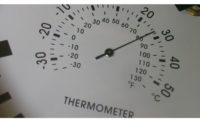
Whether it is a residential, commercial, or industrial application, an HVAC system is an investment, not an expense. It costs thousands of dollars and it has an expected service life of 15 to 20 years. So the homeowner or building owner should be thinking long term, not short term. They should be thinking lifecycle cost, not lowest first cost.
If a homeowner is building, or renovating, his or her dream home, and is putting a lot of thought - and dollars - into picking high-quality windows, high-quality appliances, etc., then why should they suddenly think lowest cost when it comes to their HVAC system? If a building owner wants a well-built commercial structure that gives them a solid return for many years, why wouldn’t they also want an HVAC system that gives them a good return for many years?
Even for a homeowner that lives in a northern climate where an 18 SEER air conditioning system wouldn’t provide much of a return on investment, a 90 percent AFUE furnace could be more beneficial than an 80 percent furnace. Even if you live in a southern climate where high-efficiency heating isn’t a concern, that 18 SEER air conditioning system could be a good long-term investment.
(I want to make it clear that I’m not advocating for government mandates requiring regional efficiency standards or higher efficiency standards. I’m not advocating for installations that require the customer to rebuild his attic. I’m talking about the best efficiency that makes sense for the consumer. If a customer is going to settle into a home and live there for the long term, why not choose the best equipment that he can afford instead of settling for good enough?)
For commercial and industrial buildings, where energy costs eat up a lot of dollars, efficiency should be something that always draws the interest of owners and managers. Commercial and industrial building operators are always looking for ways to reduce expenses. A high-efficiency HVAC system is a way to gain long-term operating savings with an attractive payback period. The life of the system has to be stressed. Looking to save money upfront, while throwing away money over the next 20 years because your HVAC system is the lowest cost (and least efficient) available, is not good business. Urge your commercial/industrial customers to look at the big picture - the long-term picture. Thinking cheap and buying cheap costs, not saves, them dollars.
In a story about mall owners going green, Teresa F. Lindeman of thePittsburgh Post-Gazettenoted, “Some efforts may have been driven as much by green, as in dollars, as green building practices, but that fits the increasingly practical approach winning over more converts.”
Filling your pockets with more green, as in dollars, should always be a motivator. If a customer is environmentally conscious or absolutely wants a green building, they’ll certainly let you know of their wants and needs. But everybody should desire saving greenbacks and keeping more of them in their wallet, and energy efficiency is a way to do it.
EFFICIENCY IS NOT POLITICAL; IT WORKS
At the recent 18th annual Energy Efficiency Forum in Washington, D.C., Rep. James Sensenbrenner (R-Wis.), a long-time conservative voice in the House of Representatives, said, “Energy efficiency is an important message that rings true every time. Republican, Democrat, conservative or liberal, everyone agrees that energy shouldn't be wasted. It's common sense and it's something we can all generally agree on: energy efficiency works.”Rep. Sensenbrenner cited a 2005 U.S. Environmental Protection Agency (EPA) report which noted that energy efficiency programs like Energy Star not only took the emissions equivalent of 23 million cars off the road, it saved consumers about $12 billion in the process. “So,” he said, “regardless what you think of global warming, energy efficiency is a pro-consumer policy that should get vigorous support from both political parties and all citizens in this country.”
ENERGY STAR RESIDENTIAL SAVINGS
The EPA has announced that, in 2006, the percentage of newly constructed single-family homes earning the Energy Star for superior energy efficiency exceeded 12 percent in 15 states. The 15 leading states are: Alaska, Arizona, California, Connecticut, Delaware, Hawaii, Iowa, Nevada, New Hampshire, New Jersey, New York, Ohio, Texas, Utah, and Vermont."Consumers don't have to limit their smart energy choices to energy efficient cars and appliances," said Bob Meyers, EPA's principal deputy assistant administrator for Air & Radiation. "EPA is pleased to see builders in so many states leading the effort to offer their customers high-efficiency, low-emission choices in new homes."
Nearly 200,000 new homes nationwide earned the Energy Star in 2006, bringing the total number of Energy Star qualified homes across the nation to almost 750,000. To date, these homes have locked in annual savings of more than $180 million for homeowners by saving over 1 billion kWh of electricity and 100 million therms of natural gas.
So a good number of builders see the value in selling energy-efficient Energy Star homes. And a good number of people are buying those homes. And the key word here is value - the savings that can be achieved.
CONCLUSION
Keeping more of their dollars, rather than handing them over to utilities and oil companies, should be a strong motivator for your residential, commercial, and industrial customers. It should be something you can readily sell. The numbers are there to back you up. As the price of energy goes up, the annual savings go up and the payback is quicker.Energy efficiency also benefits our national security. Because the U.S. now imports 60 percent of its oil - with much of it coming from a highly unstable part of the world - greater efficiency increases our energy security.
And if that efficiency should happen to reduce some emissions along the way, it’s not going to hurt anybody.
Publication date:07/23/2007








